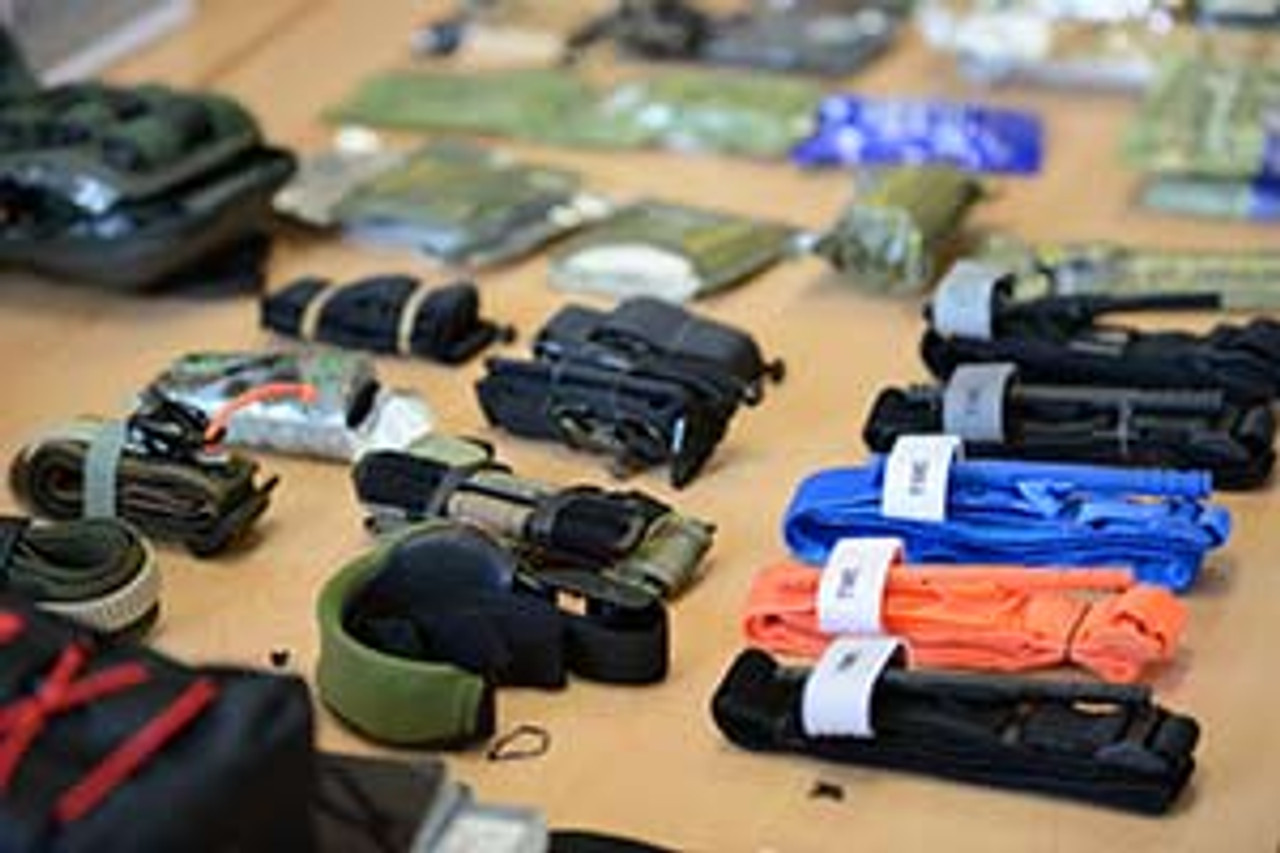About 20 percent of people who died from traumatic injuries could have survived with quick bleeding control. Put simply, using a tourniquet to “Stop the Bleed” may be the difference between life and death.
What’s a Tourniquet?
Tourniquets are designed to stop bleeding from extremities. They should be easy to use, durable, and mechanically effective to stop arterial blood flow. Windlass and stretch-band tourniquets help the responder apply sufficient pressure to the circumference of a limb to stop blood flow in less than a minute.
A separate category of tourniquets, called junctional tourniquets, are designed to stop bleeding in the groin and armpit areas where an extremity tourniquet cannot be applied. For the purpose of this article, we’ll focus on tourniquets for use on arms and legs.
How to choose the right one for you?
Consider Your Level of Training: We recommend people equip themselves with the device with which they are most familiar, even if it is not the most highly rated one. Most tourniquets can be applied in seconds if a person received training and practiced with them.
In high-stress situations involving a major injury, fine motor skills can deteriorate significantly. To get familiar with your tourniquet, practice right-handed and left-handed operation on others and yourself. Windlass-driven tourniquets, such as the CAT (Combat Application Tourniquet), SAM XT or SOFTT-W, are fast and effective at stopping blood flow but can be less intuitive to use. Training videos can be helpful but there is no substitute for muscle memory gained through repetition.
Other styles such as the SWAT-T are more intuitive stretch-and-wrap designs. But you still need to practice, especially on yourself, as these can be tricky to self-apply in some situations, such as applying to your dominant arm using only your non-dominant arm.
It is not recommended to train repeatedly with a windlass tourniquet that you intend to deploy for emergency use, as the inner bands can stretch out over time. Trainer versions (usually blue color) are available. This is less of a concern with the SWAT-T.
Assess Your Risk Profile: Do you spend time in places that are soft targets for a possible active shooter? Do you carry a firearm, and are you around firearms? Do you spend time in the backcountry hunting or operating a chainsaw? Are you on the road so often that coming across a major accident is only a matter of time? When you’re doing any of these activities are you alone? How far are you from medical care?
Consider these questions and your personal risk profile, as they bear on the types of injuries you might encounter.
Where Will You Store the Tourniquet? It is often said the best tourniquet is the one closest at hand when a critical incident occurs. Depending on your risk profile, you might want to select a tourniquet that can be easily carried in a belt-pouch, ankle kit or cargo pocket.
The SWAT-T is probably the flattest package that can be carried in a pocket and is favored for its simplicity, ease of use, effectiveness and multi-functionality (it makes a great compression bandage cover). It is often included in Public Access Bleeding Control Stations and Bleeding Control Kits since even a minimally trained layperson can use it to good effect.
Belt/vest/pack-mountable carrying cases designed for ease of access are available, keeping tourniquets secure but always within reach. Tourniquets should be placed in a prominent position in individual first aid kits or bags, as rapid access to stop bleeding will be critical in an emergency.
Cost: Any purpose-built tourniquet will outperform an improvised solution. Many individuals and institutions—especially those who equip large numbers of people or prepare for a mass-casualty incident—are constrained by budgets, both for the actual tourniquets and for the requisite training. We recommend making cost secondary to familiarity and experience with the device. If cost is an overriding concern, then getting training specifically for the use of the selected tourniquet should be a priority.
Quality Assurance: Quality counts when life-saving dependability is at stake. All U.S. tourniquet manufacturers are required by the FDA to have compliant quality management systems at a minimum ISO 9001 certification. Not all manufacturers list ISO compliance on their websites. It is best to seek out and buy a proven tourniquet from a trusted store.
Conclusion
The longer someone bleeds, the lower their chances for survival. The first person on the scene who can help the victim is the one most likely to use a tourniquet. Before purchasing, do an honest assessment of your personal readiness and capability and use the considerations discussed in this article to help guide your decision.
More information and selection of particular tourniquets is available at HERE.
Rescue Essentials offers all of the above-mentioned devices, as well as the Ratcheting Medical Tourniquet (RMT) and carrying options for all of them. They can be seen HERE. Kits that include tourniquets are also offered. Even if you are building your own trauma kit or IFAK, we recommend looking through the contents lists on these pages for ideas.
